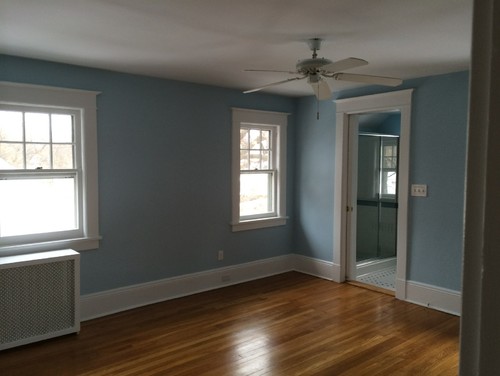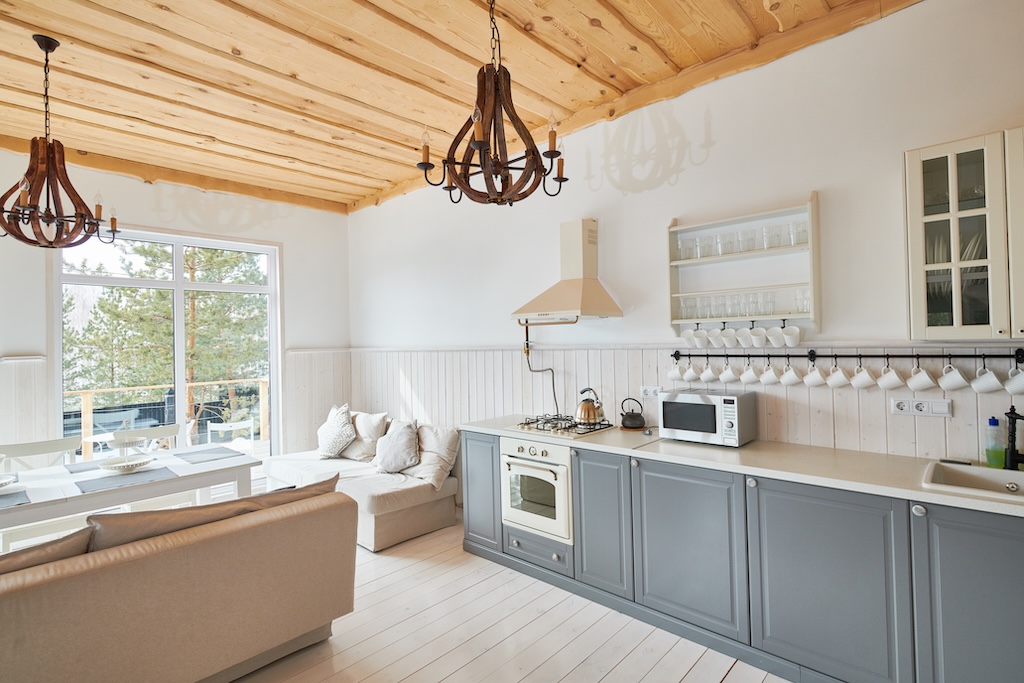Enhance Your Inside Style With Comprehensive Color Examination
The combination of shade examination into indoor style offers an one-of-a-kind chance to improve and raise the emotional and aesthetic resonance of an area. By engaging with a skilled color expert, you can browse the intricacies of color choice, making certain that your choices not just complement building features yet also resonate with personal style and mental influence.
Benefits of Shade Appointment

Furthermore, color consultation help in optimizing natural light and maximizing spatial assumption. Lighter tones can make a room show up even more extensive, while darker tones develop an intimate setting. Cleveland Metro Painting Specialists. This critical application of color can significantly influence the overall ambiance of any type of interior room
Additionally, specialist specialists have a comprehensive understanding of timeless standards and present patterns, guaranteeing that the selected colors will remain attractive with time. This insight can conserve customers from pricey redesigns in the future. Color consultation equips customers by providing them with a clear vision and direction, cultivating confidence in their design selections and inevitably leading to a much more effective and satisfying indoor design result.
Understanding Shade Psychology
The importance of color psychology in interior decoration can not be overemphasized, as it delves into the psychological and emotional effects that numerous colors can evoke in people. Colors can affect mood, habits, and also performance, making them a critical factor to consider in any layout job.
For circumstances, warm shades such as red, orange, and yellow are typically associated with power and warmth. They can promote sensations of enjoyment and convenience, making them suitable for social rooms like living rooms or kitchen areas. Conversely, great shades like blue, green, and purple often tend to evoke peace and peace, making them ideal for bedrooms or meditation locations.
Additionally, using neutral tones can create a well balanced environment by enabling the bolder shades to stand out without overwhelming the detects. Understanding these mental effects makes it possible for designers to produce areas that not just look cosmetically pleasing but likewise advertise psychological health.
Incorporating color psychology into interior style entails a thoughtful option of hues tailored to the designated feature of each area, inevitably boosting the total experience for its occupants. This awareness is important for attaining a unified and useful indoor setting.
The Shade Wheel Clarified
Understanding the relationships between hues is important for effective interior decoration, and the color wheel works as a valuable device in this procedure. The shade wheel, created by Isaac Newton in the 17th century, illustrates the range of colors organized in a circular format. It comprises primary shades-- red, blue, and yellow-- that can not be developed by blending other colors. Secondary shades, created by integrating primaries, include green, orange, and purple. Tertiary shades arise from mixing a primary and a secondary shade, causing colors such as turquoise and red-orange.
The shade wheel assists designers realize the partnerships in between colors, consisting of complementary, analogous, and triadic schemes. Complementary colors, positioned contrary each various other on the wheel, produce dynamic contrasts that can invigorate an area. Comparable colors, situated beside one an additional, offer a cohesive and unified look. Triadic plans use 3 uniformly spaced shades, providing equilibrium and visual interest.
Making use of the color wheel in indoor design not only boosts aesthetic charm yet also stimulates specific emotions and environments, making it an essential referral for shade assessment. Recognizing these relationships eventually equips developers to produce spaces that are both useful and aesthetically captivating.
Picking the Right Scheme
A well-chosen color scheme can link a space, boost its features, and evoke wanted feelings. Different areas serve different functions and call for combinations that reflect their designated use; for circumstances, tranquil colors such as soft blues or eco-friendlies function well in bed rooms, promoting relaxation.
Following, take right into account the natural light offered. Light can dramatically alter exactly how colors appear, so it is important to examine the room at different times of the day. In addition, take into consideration existing architectural elements and home furnishings. An unified palette should enhance these functions, creating a natural appearance throughout the space.
When Read Full Report choosing shades, use the 60-30-10 guideline, which recommends that 60% of the area should be a leading shade, 30% a secondary shade, and 10% an accent color. This ratio makes sure equilibrium and aesthetic rate of interest (Cleveland Metro Painting Specialists). Finally, example shades on the walls before committing, as this permits you to see just how the colors communicate with one an additional and the overall ambiance they create in your indoor style job.
Dealing With a Color Expert

When collaborating with a shade professional, the procedure commonly begins with a preliminary appointment. During this meeting, you'll review your vision, preferences, and the existing components in your room. The expert will evaluate your requirements and might suggest particular shade combinations that straighten with your find more goals.
After establishing a direction, the consultant will supply examples and visual help to assist you envision the suggested color schemes. This action is vital, as colors can show up in a different way under varying lights problems.
Additionally, a color specialist can guide you in picking complementary home furnishings, artwork, and devices to harmonize with your chosen palette. By teaming up carefully, you can accomplish a refined visual that raises your insides and produces a welcoming atmosphere. Ultimately, the experience of a shade consultant can substantially improve the overall influence of your layout job.
Final Thought
In summary, extensive color examination serves as a vital tool for enhancing indoor style. By leveraging professional expertise of shade psychology and spatial dynamics, a customized shade palette can be established to stimulate certain emotions and produce an unified atmosphere.
By involving with an experienced shade consultant, you can navigate the intricacies of color selection, making certain that your options not only enhance architectural features however additionally reverberate with personal style and mental impact. It makes up main colors-- red, blue, go right here and yellow-- that can not be produced by blending other colors.The shade wheel aids developers comprehend the relationships in between colors, consisting of complementary, analogous, and triadic schemes.When selecting colors, use the 60-30-10 guideline, which recommends that 60% of the room need to be a leading color, 30% a second color, and 10% an accent shade. By leveraging expert knowledge of shade psychology and spatial dynamics, a customized shade combination can be established to evoke specific feelings and produce an unified environment.